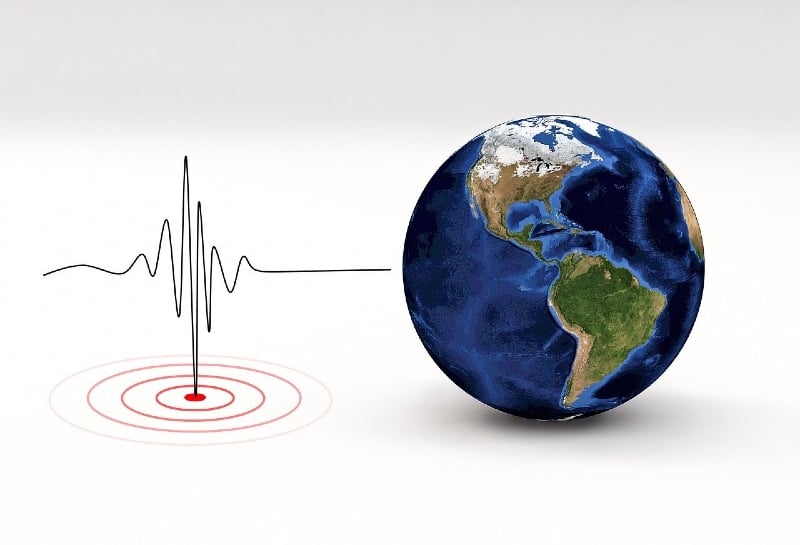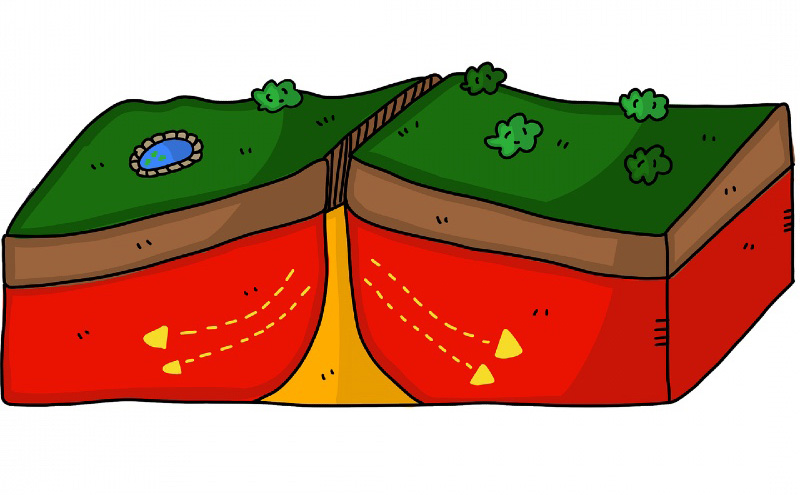
A look at the terrifying but fascinating earthquakes that have struck Norway and the Scandinavia region in recent history. The topic even inspired a recent Norwegian movie.
Earthquakes and Norway are two words that thankfully don’t often go together. But, that’s not to say the country isn’t affected by one of Earth’s most terrifying natural events.
Read more: Fascinating Facts About Norway
Minor tremors on the earth’s crust occur all time all around the world. If you live in close proximity to a fault line, then you have more cause for concern. Norway and much of northern Europe are a fair distance away from any of these major fault lines. As a result, we escape the worst earthquakes.
Despite this, it’s surprising how many minor tremors hit the region each year. No matter how small or big an earthquake is, most can be a scary experience for anyone unfortunate enough to experience one.
Why earthquakes happen
The earth's crust is always moving. Earthquakes are the result of that movement – the friction along fault lines were the plates meet. When rock underground breaks it causes seismic waves. These waves spread out from an epicentre, the place the break occurred, gradually weakening the in strength the further they go.

Earthquakes are measured on the richter scale of magnitude, a range of numbers that grades the power of a quake. Earthquakes measuring higher than 4.5 can be picked up on measuring stations around the world.
The most powerful earthquake ever recorded was the Great Chilean Earthquake in 1960. It had a 9.5 magnitude and killed an estimated 6,000 people.
How earthquakes are monitored in Norway
The Norwegian Seismic Array NORSAR is charged with the task of monitoring seismic activity on Norwegian territory. The centre has several monitoring stations that collect seismic data across this region.
NORSAR communicates and exchanges data with other such institutes around the world. On their website, they provide a continuously updated lisst of seismic activity across northern Europe; in addition to other monthly review reports about seismic events in the region.
Bulletins can be accessed here: https://www.norsar.no/extranet/bulletins (account required)
Earthquakes in Norway
In November 2018, a 6.8 magitude earthquake struck in the Arctic Sea off the coast of Greenland and not far from the volcanic Jan Mayen island, a Norwegian territory. It is technically the most powerful quake to hit Norway since records began.
Mainland Norway however, is not what is considered close to any fault lines or active volcanoes. Norway sits in Northern Europe and lies between the Eurasian plate that runs from the north of Iceland all the way down the middle of the Atlantic Ocean and the Arabian plate to the south of Mainland Europe.

This makes powerful earthquakes in the country very unlikely; however, some experts say, medium ones, like the one that struck Oslo and northern Europe in 1904, are likely every 100 years or so.
1904 Oslo earthquake
At 11.27 on Sunday, October 23, 1904, Norway’s capital city was rocked by an earthquake that measured 5.4 on the richer scale.
It wasn’t just felt in southern Norway but over some 800,000 square kilometres, across southern Sweden, as far as Helsinki and parts of northern Poland. There was also at least 18 reported aftershocks that followed the main earthquake.
The quake panicked many of those living in Olso at the time as buildings shook and were left damaged by its force. The worst affected was Johannes church. The fact it was built on clay ground only contributed to the level of damage to the building. Large cracks formed on walls and in the end it was decided to be beyond repair and was demolished.
Earthquakes in the rest of northern Europe
In recent years, medium earthquakes have struck Norway’s neighbours, Sweden. In March 2016, an earthquake measuring 4.1 hit 45 kilometres off the Swedish coast in the Gulf of Bothnia. It affected the Swedish towns of Skelleftteå, Piteå and Luleå but caused little or no damage.
In September 2014, a similar earthquake measuring 4.1 hit central Sweden. Both quakes are the most powerful to hit the country since the 1904, the one that also affected Oslo.

It is perhaps with little surprise that the most active Nordic country for seismic activity is Iceland. Not only is it close to the Eurasian fault line, that runs up the centre of the Atlantic Ocean, it also has some active volcanoes on the island.
The largest earthquake to hit Iceland was a 7.5 magnitude tremor that struck in May, 1912. More recent tremors include a 6.4 in 1976, a 6.6 in 2000 and a 6.1 magnitude quake that struck in 2008 injuring 30 people.
Norwegian earthquakes in film
The 2018 Norwegian film, The Quake (Skjelvet in Norwegian), thrust some spotlight on what would happen if there was an earthquake in the country.
It centres around Kristian Eikjord (played by Kristoffer Joner), a geologist, and his family. After investigating an Oslo tunnel collapse that killed a collegue, Kristoffer becomes obsessed with the prospect that a devastating earthquake will soon hit the city.

Kristian’s worst fears come true when a powerful earthquake strikes Oslo causing widespread damage. In typical disaster movie style, the narrative follows his heroic efforts to save family members.
At the box office, The Quake earned $14 million worldwide. The film is the sequal to the 2015 movie The Wave (Bølgen), in which a huge tsunami is caused by a rockslide in Geiringer fjord.
The likelihood of a powerful quake in Norway
Another significant earthquake in Norway is often talked about but this talk is right up there with similar theories about other natural disasters in Norway.
Such as, a rockslide from mountain Åkerneset in Geiranger fjord that could in turn cause a huge tsunami – just like the movie The Wave (Bølgen). Or that Pulpit Rock (Preikestolen) will collapse and slide into Lysefjord and cause a similar fate to those living nearby.
Nature is unpredictable; and it may be worth noting that a significant earthquake in the country could significantly contribute to either of the aforementioned catastrophes ever becoming a reality.


There was an earthquake in Stavanger when I was there, probably around 2000/01, it was reported 5.6 on the Richter scale at the time but I can’t recall it causing major issues
Lived more or less in Norway for 40 years. I have never even noticed a tremor. The first tremor I experienced was in California, and we were like what the f.. is going on. The locals didn’t even seem to notice it. During a few month stay, it happened several times. Experienced a larger one in Japan and Indonesia, where car alarm went of, and people were scared.
In Washington State and California, and in Chile, I’ve experienced several major quakes and their aftermaths. In Norway, I would be more concerned because the buildings are not likely to have adequate anti-seismic preparations.
My home, the UK, is quite active for unknown reasons. We get around 300 earthquakes a year.
We get a 5.something every ten years or so. My son was in one in 2008, when I was putting the baby to bed. We get a 6.something every hundred years or so. I am 55 and felt 6 earthquakes here.
The largest earthquakes occur in the English Channel and can technically be up to 7.0 on the Richter scale.
the earths crust is still rebounding upwards after the weight of the ice from the last ice age was removed
that’s why you’re getting these little to medium sized ones in places where there are no known faults in the northern hemisphere
yeah in Iceland 2020 was a 5,6 earthquake that i felt. now in 2021 there was a 5,7 5,4 5,3 5,1 and a 5,0. there were also 50 thousand earthquakes after the 5,7 and thousands of them were felt. now were waiting for a bigger one a 6,5 in the south close to the capital and also waiting on a bigger one in the north that will be most likely a 7,0.